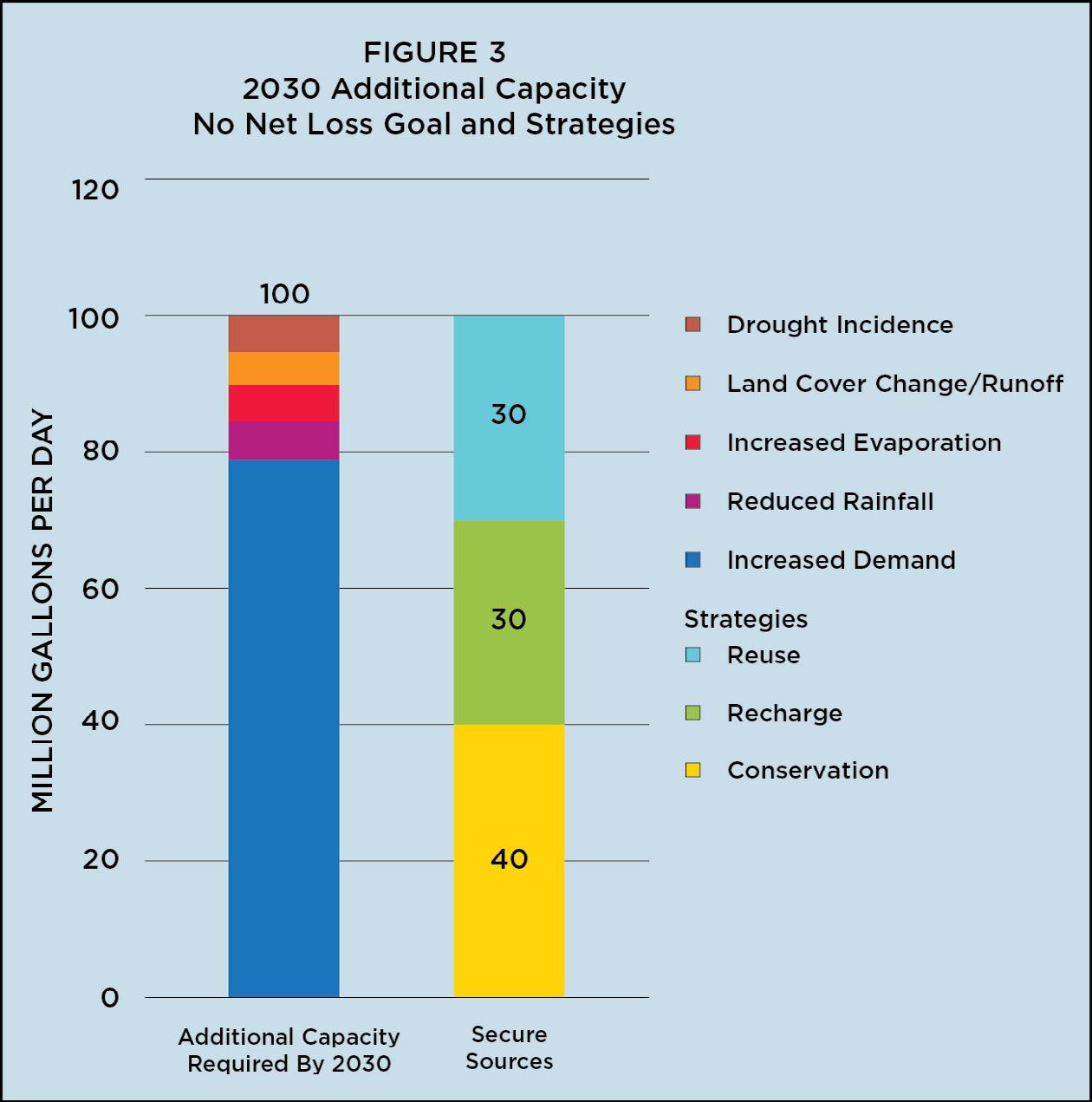
2 minute read
URGENCY AND TIMELINE
While computer models differ markedly in their predictions regarding precipitation patterns and water availability in Hawai‘i over the coming decades, the unmistakable observed trend is one of decreasing rainfall and increased incidences of drought.26 In fact, if the current trend line holds, Hawai‘i in 2030 will receive only three quarters of the rain that fell in 1985 on our islands. In addition, multiple prediction models tend to agree that regardless of overall rainfall amounts, the dry/leeward sides of our Islands where the bulk of our population live will experience reduced rainfall and increased potential evapotranspiration— simultaneously creating less supply and more demand. Along with projected population rise, the Council found these trends troubling and generate a sense of uncertainty and urgency to guard our future water supply.
To develop a rational and conservative approach to achieving “no net loss” for our current fresh groundwater supplies, the Council utilized a straight-line approach to predicting future fresh groundwater demand (Figure 1). Using 2013 as a baseline, the Council relied on publicly available data measuring an overall 449 mgd groundwater pumping rate provided by the state Commission on Water Resource Management.27 Dividing this number by the current population in Hawai‘i, the Council projected the expected annual demand in 2030 based on population projections by the state Department of Business, Economic Development, and Tourism. The Council expects 79 mgd of additional water demand within the next fifteen years.
Advertisement
Next, the Council evaluated the potential impact of four major “uncertainty factors” (Figure 2) on current water supply including: reduced rainfall; increased drought; land use changes; and, increased evapotranspiration. Weighing the potential impact of each, the Council assigned a total uncertainty factor of 5% to apply to the amount of currently pumped groundwater.28 This conservative uncertainty factor that includes changes in drought incidence, land cover change, increased evaporation, and reduced rainfall results in an expected reduction of 21 mgd to Hawai‘i’s groundwater supply over the next 15 years.
Next, adhering to a strategy of “no net loss” to our underground water resources, the Council added the expected increase in demand (79 mgd) with the uncertainty figure (21 mgd) to estimate an overall goal: 100 mgd of additional available fresh water supply by 2030 (Figure 2).
Providing 100 mgd of new capacity will help manage risk, increase the predictability of our water supply, and make all of Hawai‘i’s fresh water supply more reliable and secure over the next 15 years.
Finally, the Council identified three fresh water sources that have the realistic potential to provide 100 mgd in additional capacity by 2030. Figure 3 shows tables for yields of 40 mgd via conservation, 30 mgd via recharge, and 30 mgd via reuse to offset the expected increase in demand and supply uncertainty over the next 15 years.
While it is impossible to predict exactly what Hawai‘i’s demand and supply water future will look like, the Council’s diverse and experienced members worked together to come up with projections, estimates, and targets that reflected the shared knowledge of the group. The Council believes that given increased demand and threats to future supply it is prudent of the state to adopt a goal of increasing the available water supply by 100 mgd by 2030 through the strategies that follow.










